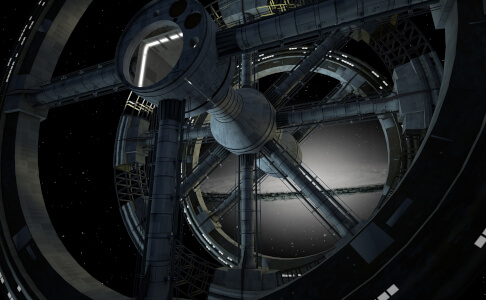Artificial Gravity
Artificial gravity's popularity in science fiction is largely due to budgetary issues involved in the creation of film and television. Coming up with explanations for the ability of people being able to walk around spaceships and spacestations as though they were under the influence of the gravity of Earth or an Earth-like planet was considerably cheaper than simulating the effects of artificial gravity. There are several common popular (or pseudoscientific) explanations for how antigravity works in science fiction.
Gravity Field
Sometimes known as a 'gravity carpet,' artificial gravity is achieved through the use of some sort of field, though the mechanisms for creating such a field are rarely explained (and perhaps that's for the better).

Centrifugal Force
Much more grounded in actual science than the idea of a gravity field, a ship or station is set into a state of constant spin which creates centrifugal force, the effect of which is to allow people to walk along the spinning surfaces as though they were walking on Earth. To image this effect, think of how your body tends to shift in your seat as you're driving and take a sharp turn, and multiply that effect. This was stunningly renacted in Stanley Kubrick's 2001, which incorporated a huge, spinning set to show an astronaut jogging across the circumference of the ship.
G-forces
Also more scientifically plausible, this involves essentially creating a gravitational force through constant acceleration. Gravity is physically a form of acceleration, so if a ship were to accelerate as a rate of 9.8 meters per second per second, this would create a force identity to the average force of gravity on the Earth's surface.